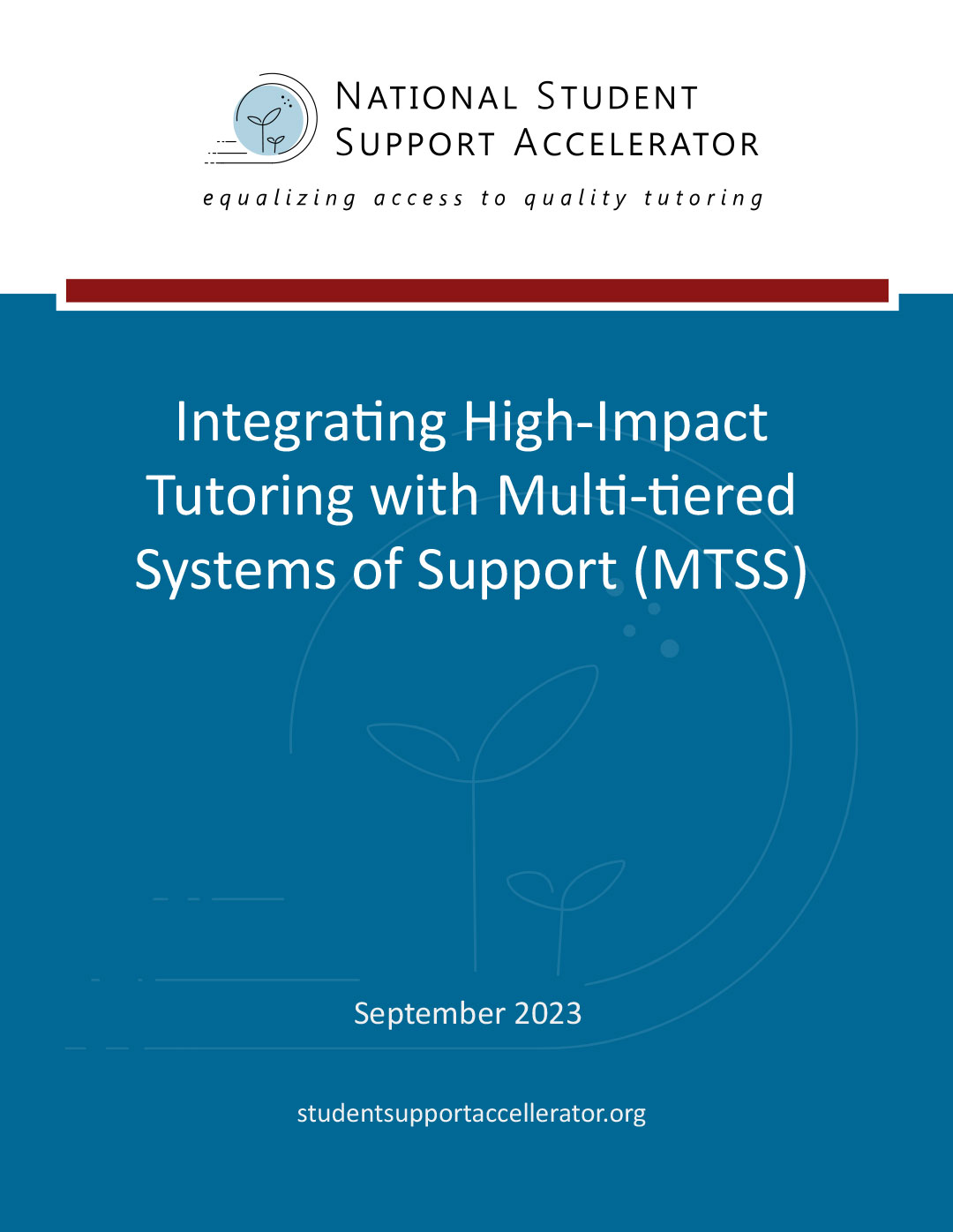Districts across the nation use Multi-Tiered Systems of Support (MTSS) to target appropriate supports for each student. High-impact tutoring is the most effective research-backed academic support – consistently demonstrating from six months to over two years of learning gains for students across grade levels and content areas in a single year of tutoring.
Districts that have chosen to integrate high-impact tutoring with MTSS are finding that embedding this highly effective support into the fabric of their schools improves student outcomes, reduces implementation challenges, improves instructional coherence, and streamlines operations.
Interviews across a number of schools, districts, and experts in the field identified critical steps to successfully integrate high-impact tutoring with MTSS without long-term additional capacity. Action steps include state level efforts, such as reviewing and shifting any conflicting guidance in state policy, district level efforts, such as defining and setting expectations for alignment and implementation, and school level efforts, such as ensuring implementation with fidelity.
This brief details the benefits and action steps of integrating high-impact tutoring with MTSS. It includes:
- A Description of High-Impact Tutoring
- A Description of MTSS
- The Case for Integrating High-Impact Tutoring with MTSS
- Action Steps for States, Districts, and Schools
- Examples of Implementation
Given the September 2024 deadline to obligate ESSER funds, now is a critical time for education agencies to plan for more effective support of students for the long run. Using high-impact tutoring as a delivery structure within a system’s MTSS framework could dramatically improve student learning and reduce inequities in students’ experiences and outcomes without substantial additional costs; yet, it requires careful planning, resource allocation, and ongoing monitoring.
Share your knowledge! Please submit any feedback, questions, or suggestions HERE.
Frequently Asked Questions
How does high-impact tutoring fit into MTSS?
High-impact tutoring can fit into MTSS as a Tier I, Tier II, or Tier III support depending on student needs and school context. For example, Baltimore City Public Schools chose to use high-impact tutoring for Tier 2 supports due to a lack of consistent school structure to target these students, while Grand Forks chose to use high-impact tutoring for Tier 3 supports to target students who most needed recovery of standards.
What should be cut out of the MTSS to make room for high-impact tutoring?
Each school or district designs their MTSS to provide the most effective interventions for their students based on their individual context. Schools and districts will reduce costs by integrating high-impact tutoring into MTSS rather than implementing both MTSS and high-impact tutoring separately. In general, the staff and resources to support less effective interventions can be repurposed to support high-impact tutoring.
How does high-impact tutoring within MTSS fit into a school day?
A significant benefit of integrating high-impact tutoring into MTSS is that time for MTSS is already built-in to the school day. When schools integrate high-impact tutoring into existing MTSS structures, it allows those already scheduled times in a student’s schedule to be used for high-impact tutoring.
What funding is available to prepare teachers implementing high-impact tutoring in an MTSS model?
Districts can leverage Title II, Part A of ESSA funds for teacher professional development. Title II funds can only be used for teachers and paraprofessionals on the school’s payroll. For more information concerning funding resources, please see the Funding for High-Impact Tutoring Brief.
How does a tutoring program find the personnel with the skills needed for tutoring?
Please see the Grow Your Own Program: Recruiting and Selecting Tutors from the District Playbook to learn more about finding tutoring personnel.
Where can I find more resources about MTSS?
- MTSS4Success
- What is Multi-Tiered System of Supports? -EdWeek
- California Department of Education's definition of Multi-Tiered System of Support
